丙烯醛-DNPH,标准溶液,1000μg/ml,溶剂:乙腈
产品编号:西域质检-91567b| CAS NO:888-54-0| 分子式:C9H8N4O4| 分子量:236.184
本网站销售的所有产品仅用于工业应用或者科学研究等非医疗目的,不可用于人类或动物的临床诊断或者治疗,非药用,非食用,
丙烯醛-DNPH
乙腈中丙烯醛-DNPH
本标准物质主要用于测量仪器校准,分析方法评价和质量控制,以及食品,卫生,环境和农业等领域相应成分含量测定与残留检测,也可用于量值溯源或作为标准储备溶液,通过逐级稀释配制成各种工作用标准溶液等。
本标准物质以纯度经准确定值的丙烯醛-DNPH纯品为原料,以HPLC级乙腈为溶剂,采用重量-容量法准确配制而成。
丙烯醛-DNPH,英文名称:Acrolein-DNPH,CAS No. :888-54-0
本标准物质以配制值作为标准值,采⽤⾼效液相⾊谱法-⼆极管阵列检测器(HPLC-DAD)对本批次标准物质和质量控制对照样品进⾏⽐对,核验配制值。通过使⽤满⾜计量学特性要求的制备⽅法,测量⽅法和计量器具,保证标准物质的量值溯源性。
标准值:1000μg/mL,相对扩展不确定度(k=2):2%
标准值的不确定度综合考虑了原料纯度定值结果,制备过程,量值核验以及均匀性,稳定性等引入的不确定度分量。
依据JJF1343-2022《标准物质的定值及均匀性、稳定性评估》,对分装后的样品进行随机抽样,对溶液浓度进行均匀性检验,稳定性考察。结果表明,本标准物质均匀性,稳定性良好。
本标准物质量值自定值日期起,有效期12个月, 研制单位将继续跟踪监测该标准物质的稳定性,有效期内如发现量值变化,将及时通知用户。
1、包装:本标准物质采用硼硅酸盐玻璃安瓿瓶包装,约1.2mL/支,移取或稀释时请以移液管量取为准。
2、贮存:运输时应避免挤压,碰撞;冷藏(2~8)℃,置于阴凉处贮存。
3、使用:启封前于室温(20±3)℃平衡,并充分摇匀。安瓿瓶一经打开,应立即使用,不可再次熔封后作为标准物质使用。
相关文档
化学品安全说明书(MSDS)
下载MSDS质检证书(COA)
相关产品
| 符号 |
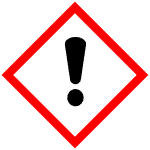
GHS07 |
|---|---|
| 信号词 | Warning |
| 危害声明 | H315-H319-H335 |
| 警示性声明 | P261-P305 + P351 + P338 |
| 个人防护装备 | dust mask type N95 (US);Eyeshields;Gloves |
| 危害码 (欧洲) | Xi,Xn,F |
| 风险声明 (欧洲) | 36/37/38-36-20/21/22-11 |
| 安全声明 (欧洲) | 26-36/37-16 |
| 危险品运输编码 | UN 1648 3/PG 2 |
| 包装等级 | III |
| 海关编码 | 2928000090 |
|
Acrolein 2,4-Dinitrophenylhydrazone
Revision number: 6
SAFETY DATA SHEET Section1. IDENTIFICATION Product name:Acrolein 2,4-Dinitrophenylhydrazone Revision number:6 Section2. HAZARDS IDENTIFICATION GHS classification PHYSICAL HAZARDS Category 2 Flammable solids HEALTH HAZARDS Category 2 Skin corrosion/irritation Serious eye damage/eye irritationCategory 2A Not classified ENVIRONMENTAL HAZARDS GHS label elements, including precautionary statements Pictograms or hazard symbols Signal wordWarning Hazard statementsFlammable solid Causes skin irritation Causes serious eye irritation Precautionary statements: Keep away from heat/sparks/open flames/hot surfaces. - No smoking. [Prevention] Use explosion-proof electrical/ventilating/lighting equipment. Wash hands thoroughly after handling. Wear protective gloves/eye protection/face protection. IF IN EYES: Rinse cautiously with water for several minutes. Remove contact lenses, [Response] if present and easy to do. Continue rinsing. If eye irritation persists: Get medical advice/attention. IF ON SKIN: Gently wash with plenty of soap and water. If skin irritation occurs: Get medical advice/attention. Take off contaminated clothing and wash before reuse. Section3. COMPOSITION/INFORMATION ON INGREDIENTS Substance/mixture:Substance Components:Acrolein 2,4-Dinitrophenylhydrazone Percent:>98.0%(HPLC)(T) 888-54-0 CAS Number: Synonyms:2-Propenal 2,4-Dinitrophenylhydrazone Chemical Formula:C9H8N4O4 Acrolein 2,4-Dinitrophenylhydrazone Section4. FIRST AID MEASURES Inhalation:Remove victim to fresh air and keep at rest in a position comfortable for breathing. Get medical advice/attention if you feel unwell. Skin contact:Remove/Take off immediately all contaminated clothing. Gently wash with plenty of soap and water. If skin irritation or rash occurs: Get medical advice/attention. Eye contact:Rinse cautiously with water for several minutes. Remove contact lenses, if present and easy to do. Continue rinsing. If eye irritation persists: Get medical advice/attention. Ingestion:Get medical advice/attention if you feel unwell. Rinse mouth. A rescuer should wear personal protective equipment, such as rubber gloves and air- Protection of first-aiders: tight goggles. Section5. FIRE-FIGHTING MEASURES Suitable extinguishingDry chemical, foam, water spray, carbon dioxide. media: Specific hazards arising Explosion risk in case of fire. Fight fire remotely due to the risk of explosion. from the chemical:Take care as it may decompose upon combustion or in high temperatures to generate poisonous fume. Precautions for firefighters: Fire-extinguishing work is done from the windward and the suitable fire-extinguishing method according to the surrounding situation is used. Uninvolved persons should evacuate to a safe place. In case of fire in the surroundings: Keep containers cool by spraying with water. Eliminate all ignition sources if safe to do so. Special protectiveWhen extinguishing fire, be sure to wear personal protective equipment. equipment for firefighters: Section6. ACCIDENTAL RELEASE MEASURES Use personal protective equipment. Keep people away from and upwind of spill/leak. Personal precautions, protective equipment and Entry to non-involved personnel should be controlled around the leakage area by emergency procedures: roping off, etc. Environmental precautions: Prevent product from entering drains. Methods and materials for Sweep dust to collect it into an airtight container, taking care not to disperse it. containment and cleaning Adhered or collected material should be promptly disposed of, in accordance with up: appropriate laws and regulations. Prevention of secondary Remove all sources of ignition. Fire-extinguishing devices should be prepared in hazards:case of a fire. Use spark-proof tools and explosion-proof equipment. Section7. HANDLING AND STORAGE Precautions for safe handling Technical measures:Handling is performed in a well ventilated place. Wear suitable protective equipment. Be careful not to cause leakage, overflow, or dispersion. Steam should not be generated unnecessarily. Keep away from heat/sparks/open flame/hot surfaces. -No smoking. Take measures to prevent the build up of electrostatic charge. Use explosion-proof equipment. Avoid shock and friction. Wash hands and face before breaks and immediately after handling the product. Use a local exhaust if dust or aerosol will be generated. Advice on safe handling: Avoid contact with skin, eyes and clothing. Conditions for safe storage, including any incompatibilities Storage conditions:Keep container tightly closed. Store in a cool and dark place. Be sure not to give the container unexpected impacts, such as falling down or falling off. Store away from incompatible materials such as oxidizing agents. Packaging material:Comply with laws. Section8. EXPOSURE CONTROLS / PERSONAL PROTECTION Engineering controls:Install a closed system or local exhaust. Also install safety shower and eye bath. Personal protective equipment Acrolein 2,4-Dinitrophenylhydrazone Section8. EXPOSURE CONTROLS / PERSONAL PROTECTION Respiratory protection: Dust respirator. Follow local and national regulations. Hand protection:Protective gloves. Eye protection:Safety glasses. A face-shield, if the situation requires. Skin and body protection: Protective clothing. Protective boots, if the situation requires. Section9. PHYSICAL AND CHEMICAL PROPERTIES Physical state (20°C):Solid Form:Crystal- Powder Colour:Yellow - Yellow red Odour:No data available pH: No data available Melting point/freezing point:165°C Boiling point/range:No data available Flash point:No data available Flammability or explosive limits: Lower:No data available Upper:No data available Relative density:No data available Solubility(ies): [Water]No data available [Other solvents]No data available Section10. STABILITY AND REACTIVITY Chemical stability:Stable under proper conditions. Possibility of hazardous May explosively decompose on heating, shock, friction, etc. reactions: Heat, Spark, Open flame, Static discharge, Shock, Friction Conditions to avoid: Incompatible materials: Oxidizing agents Hazardous decomposition Carbon monoxide, Carbon dioxide, Nitrogen oxides (NOx) products: Section11. TOXICOLOGICAL INFORMATION Acute Toxicity:No data available Skin corrosion/irritation: No data available Serious eyeNo data available damage/irritation: Germ cell mutagenicity: No data available Carcinogenicity: IARC =No data available NTP =No data available Reproductive toxicity:No data available Section12. ECOLOGICAL INFORMATION Ecotoxicity: Fish:No data available No data available Crustacea: Algae:No data available Persistence / degradability: No data available BioaccumulativeNo data available potential(BCF): Mobility in soil No data available Log Pow: Soil adsorption (Koc):No data available No data available Henry's Law constant(PaM3/mol): Acrolein 2,4-Dinitrophenylhydrazone Section13. DISPOSAL CONSIDERATIONS Recycle to process, if possible. Consult your local regional authorities and an expert of disposal. You may be able to dissolve or mix material with a combustible solvent and little by little burn in a chemical incinerator equipped with an afterburner and scrubber system. If a large amount of the substance is burned at a time, an explosion may occur. Observe all federal, state and local regulations when disposing of the substance. Section14. TRANSPORT INFORMATION Hazards Class:4.1: Flammable solid. 1325 UN-No: Proper shipping name:Flammable solid, organic, n.o.s. III Packing group: Section15. REGULATORY INFORMATION Safe management ordinance of dangerous chemical product (State Council announces on January 26, 2002 and revised on February 16,2011): Safe use and production, the storage of a dangerous chemical, transport, loading and unloading were prescribed. SECTION 16 - ADDITIONAL INFORMATION N/A |
|
~% 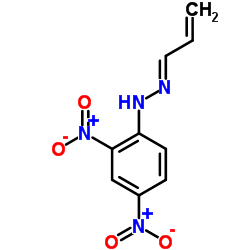
888-54-0 |
| 文献:Journal of the American Chemical Society, , vol. 73, p. 5282,5284 |
|
~% 
888-54-0 |
| 文献:Journal of Organic Chemistry, , vol. 27, p. 1238 - 1240 |
|
~% 
888-54-0 |
| 文献:Journal of Organic Chemistry USSR (English Translation), , vol. 17, p. 1914 - 1918 Zhurnal Organicheskoi Khimii, , vol. 17, # 10 p. 2148 - 2152 |
|
~%
详细
|
| 文献:Journal of Organic Chemistry USSR (English Translation), , vol. 22, # 9 p. 1771 - 1774 Zhurnal Organicheskoi Khimii, , vol. 22, # 9 p. 1972 - 1975 |
|
~% 
888-54-0 |
| 文献:Collection of Czechoslovak Chemical Communications, , vol. 45, # 4 p. 1173 - 1181 |
|
~% 
888-54-0 |
| 文献:Zhurnal Organicheskoi Khimii, , vol. 5, p. 1932 - 1937,1879 - 1883 |
|
~%
详细
|
| 文献:Journal of the American Chemical Society, , vol. 73, p. 5282,5284 |
|
~%
详细
|
| 文献:Journal of the Chemical Society, , p. 490,496 |
| 上游产品 7 | |
|---|---|
| 下游产品 0 | |

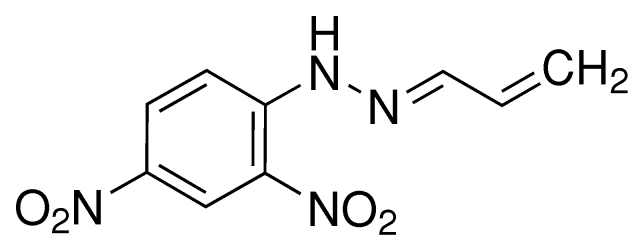
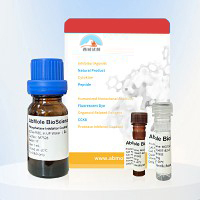
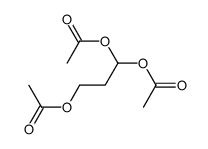
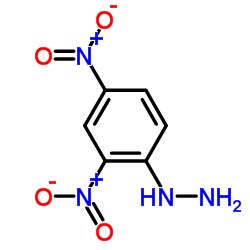
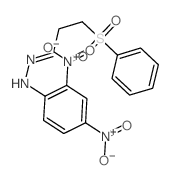
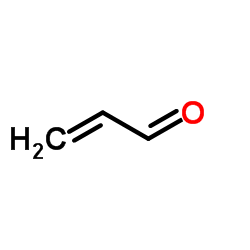

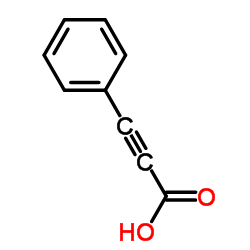

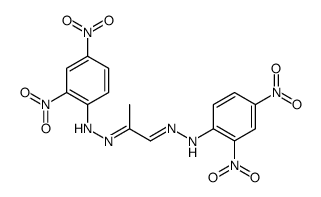
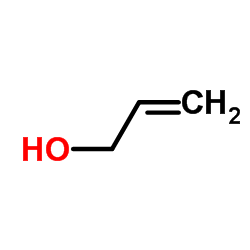

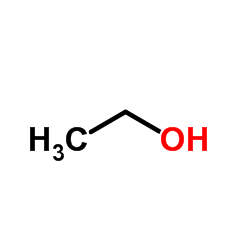

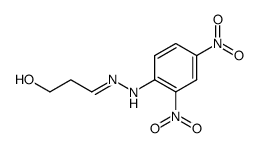





 浙公网安备 33010802013016号
浙公网安备 33010802013016号